Technology integration into fashion has opened up new avenues for creativity and utility. One such innovative trend is the incorporation of QR codes on clothing.
This guide is ready to help you understand how QR codes can be used on clothing, offering a comprehensive look at their functions and benefits. Let's begin!
Why Use QR Codes on Clothing?

Integrating QR codes into clothing is not just a fad but a strategic approach to blending technology with fashion. Here are some key reasons why QR codes are becoming popular in apparel:
- Enhanced Customer Engagement: QR codes on clothing create an interactive experience. Scanning the code can lead customers to exclusive content, offers, or digital platforms, thereby increasing engagement and interest.
- Marketing and Branding: QR codes are an innovative way to market your brand. You can drive traffic to your website, social media, or promotional campaigns by linking them to digital content.
- Product Information: QR codes can provide valuable product information, such as the materials used, care instructions, or the brand's story, enhancing transparency and trust.
- Innovative Design Element: QR codes can also be a design element, adding a modern and tech-savvy flair to the clothing.
- Sustainability: In an era of sustainability, QR codes reduce the need for physical tags and packaging, aligning with eco-friendly practices.
How to Make and Use a QR Code for Clothing
Incorporating QR codes into clothing is an innovative way to bridge the gap between physical fashion items and digital interactivity.
Here's a detailed guide on creating and utilizing QR codes effectively on clothing.
Choosing a QR Code Type and Creating It
First things first, you need to decide what type of content your QR code will link to. This could be a website, a promotional video, an exclusive offer, or even a social media page.
The content should align with your marketing goals and provide value to your customers.
- Select a QR Code Generator: Numerous free QR code generators are available online. Choose one that offers customization options and is user-friendly. You can use QRCodeDynamic for static and dynamic QR codes.
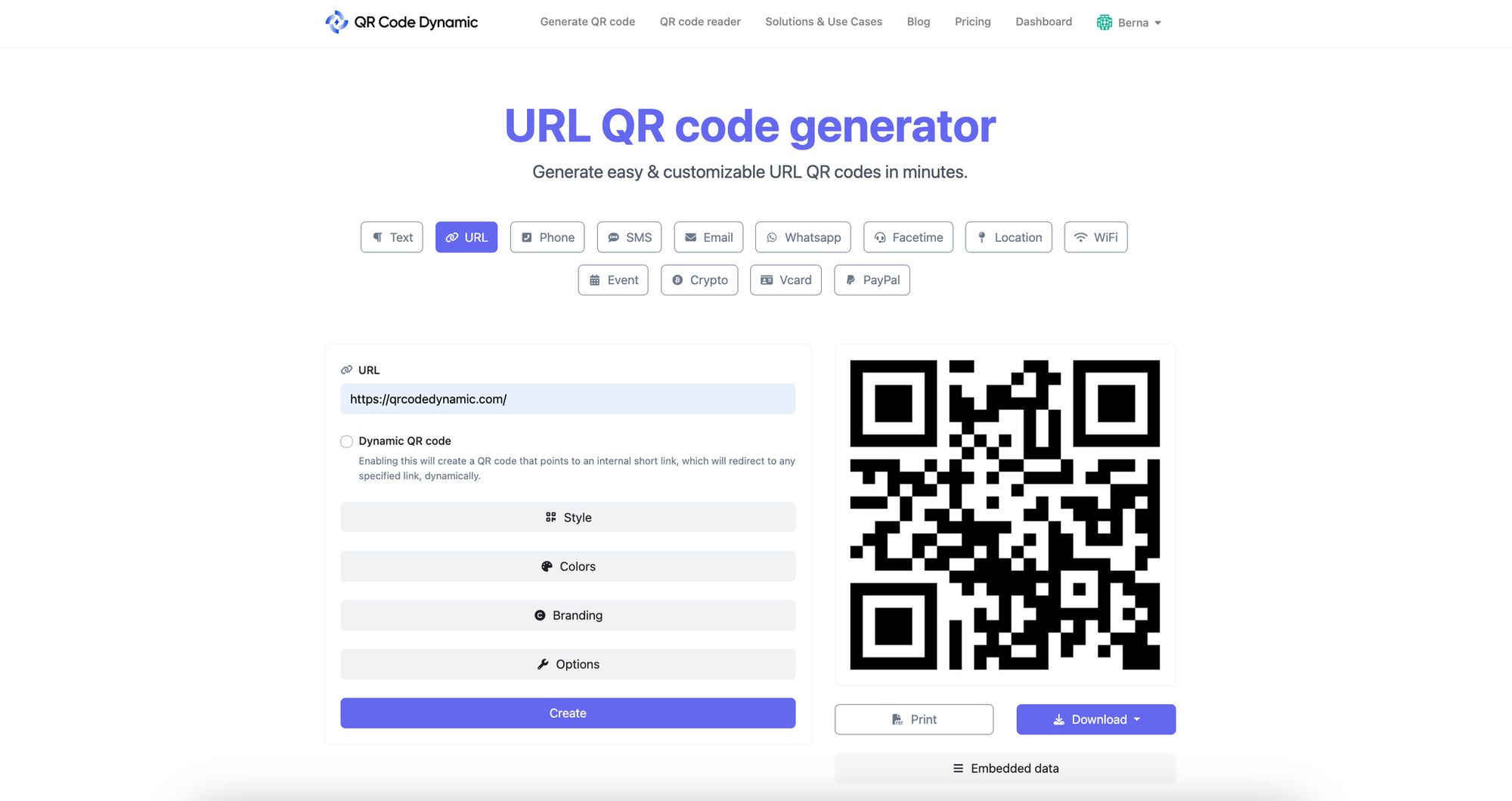
- Determine Your Content: Decide on the content you want to link to. This could be a URL, text, phone, email or location.
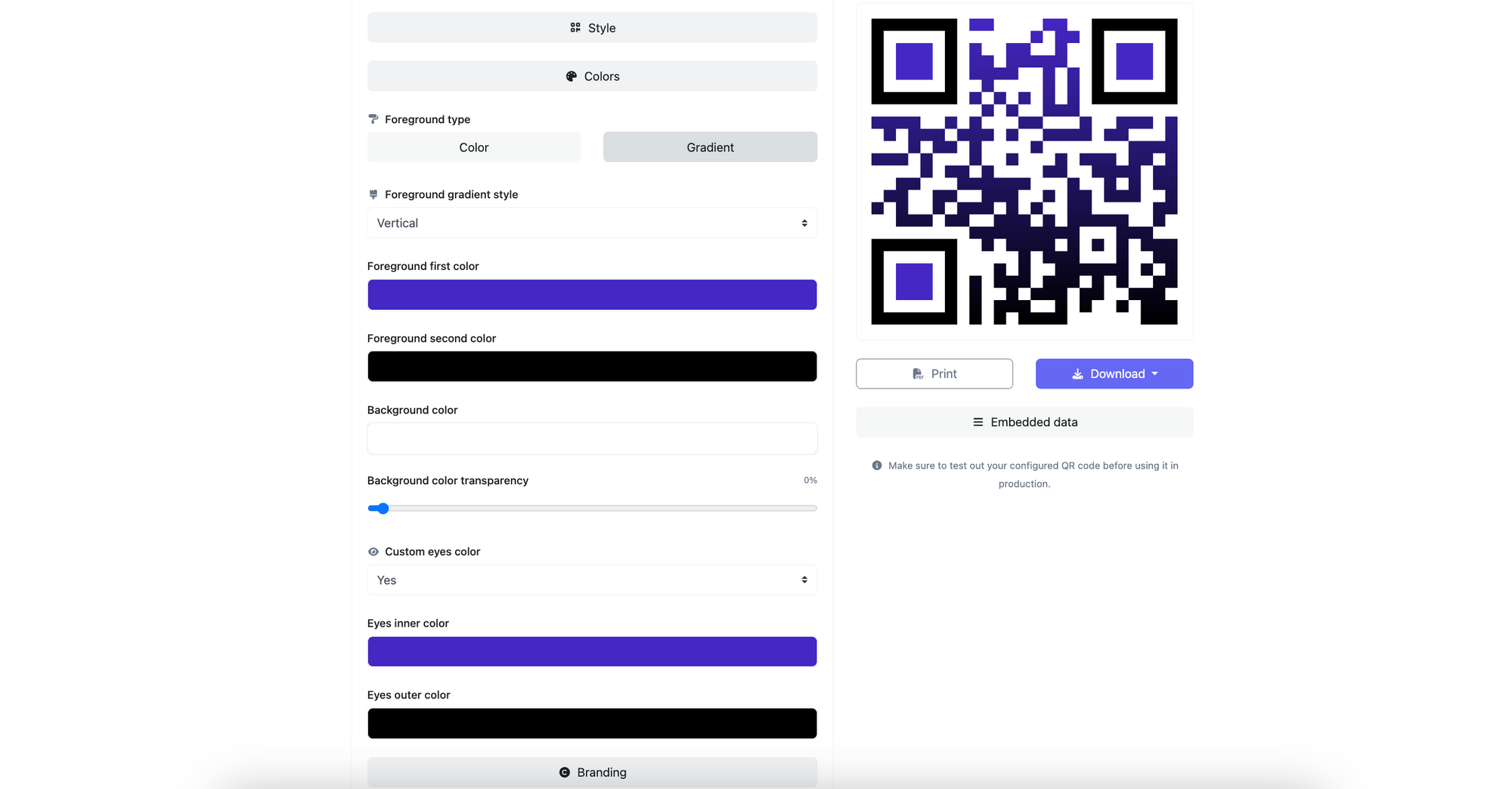
- Customize Your QR Code: QRCodeDynamic allows you to customize the design of your QR code. You can change colors, add a logo, or even modify the shape of the blocks in the code to align it with your brand identity.
- Generate and Download: Once you're happy with the design, generate the QR code and download it in a high-resolution format suitable for printing.
Adding Your QR Code to a Folder for Organization
Organizing your QR codes is crucial, especially if you are managing multiple codes for different products or campaigns.
Best Practices for Organization:
- Digital Folder: Create a digital folder on your computer or cloud storage specifically for your QR codes.
- Label Clearly: Name each QR code file clearly to indicate what it links to or what product it's associated with.
- Regular Updates: Regularly check and update the content linked to your QR codes, and keep a record of these updates in your folder.
Testing Your QR Code
Before printing your QR code on clothing, it's essential to test it:
- Use Multiple Devices: Scan the QR code with smartphones and readers to ensure compatibility.
- Check the Link: Ensure that the QR code redirects correctly to the intended content.
Printing and Placing Your QR Code on Clothing
When it comes to printing and placing the QR code on clothing, consider both aesthetics and functionality:
- Print Quality: Use high-quality printing to ensure the QR code is clear and scannable.
- Strategic Placement: Place the QR code where it is easily visible and accessible but also where it complements the design of the clothing.
Tracking Your Results and Making Necessary Adjustments
Finally, the key to successful implementation is tracking and adapting:
- Analytics: Use QR code tracking tools to monitor how many times the code is scanned and what devices are used.
- Feedback Loop: Gather customer feedback on the QR code experience and use this information to make necessary adjustments.
Benefits of Using QR Codes on Clothing
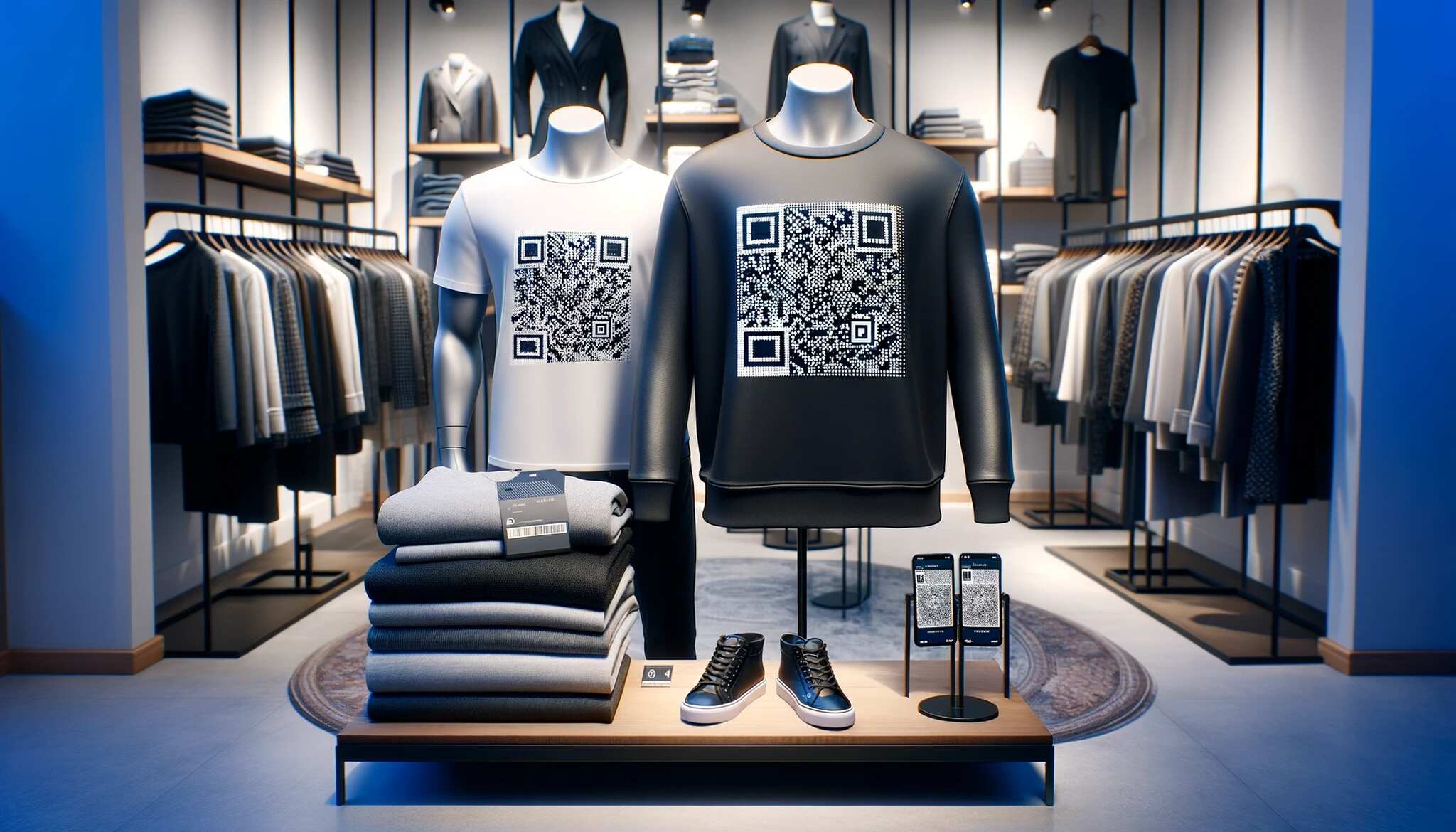
The fashion industry is constantly evolving, and the integration of QR codes into clothing is a testament to this innovative spirit. QR codes on clothing are not just a technological addition but a new way to engage, inform, and connect with consumers.
Here are benefits of using QR codes on clothing:
It Sparks Curiosity
- Interactive Element: QR codes on clothing intrigue customers. It's human nature to be curious, and a QR code acts as a gateway to a treasure trove of information and experiences, encouraging customers to explore.
- Mystery and Excitement: The mystery of what lies behind the code can create excitement and anticipation, making the clothing item more than just a fashion piece but a conversation starter.
An Effective Tool for Merchandise
- Direct Marketing: QR codes serve as direct marketing tools. Scanning them can lead customers to product pages, special offers, or exclusive content, directly boosting sales and engagement.
- Versatile Use: Whether it's promoting a new collection, offering discounts, or providing product information, QR codes are incredibly versatile in their application, making them an excellent tool for various marketing strategies.
Compact and Sustainable
- Eco-friendly Option: In an era where sustainability is crucial, QR codes offer an eco-friendly alternative to traditional paper tags and labels. This aligns with the growing demand for sustainable practices in fashion.
- Space-Efficient: QR codes take up minimal space on garments yet hold vast amounts of information, making them a compact solution for conveying messages or information.
Part of the Design Aesthetics
- Fashion Statement: QR codes can be designed creatively to complement the garment's design, making them a part of the fashion statement rather than just a functional element.
- Customizable Designs: The flexibility in designing QR codes means they can be tailored to align with brand identity and aesthetic values, enhancing the overall look of the clothing.
Delivering Measurable Success
- Trackable Engagement: QR codes provide measurable data. Each scan can be tracked, offering insights into customer behavior and preferences, which is invaluable for marketers.
- Adaptability: Based on the data collected, brands can adapt their strategies to better meet customer needs, making QR codes a marketing tool and a means to evolve and grow with the customer.
Applications of QR Codes on Clothing
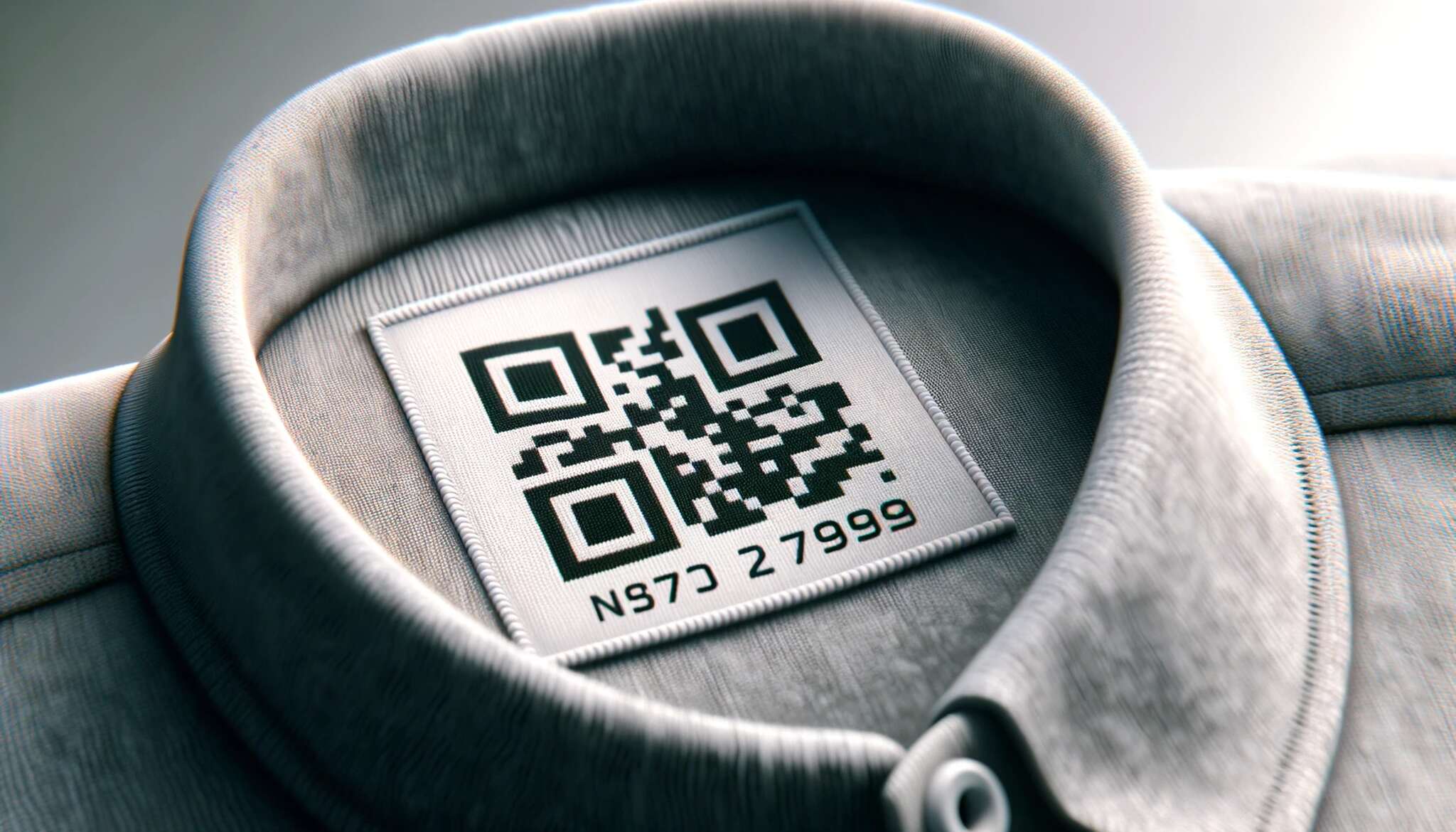
QR codes can transform ordinary garments into interactive experiences, offering a plethora of applications that benefit both the brand and the consumer.
Let's explore the diverse and creative ways QR codes can be utilized in clothing.
Highlighting Complementary Items
QR codes can act as personal shopping assistants. Imagine a customer admiring a dress and scanning a QR code that suggests a matching handbag or shoes. This enhances the shopping experience and increases the chances of cross-selling.
How it works:
- Link to Suggested Products: Embed a QR code on a clothing item that, when scanned, leads to a curated list of complementary items available on your website or store.
- Personalization: Use customer data to provide personalized recommendations, enhancing the user experience.
Improving Traceability

In an age where consumers are increasingly conscious about the origins of their products, QR codes offer a transparent window into the supply chain.
Benefits:
- Product History: By scanning a QR code, customers can access information about where and how a garment was made, the materials used, and even the people behind its creation.
- Building Trust: This level of transparency builds trust and strengthens the relationship between the brand and the consumer.
Show Off 360-degree Views
Sometimes, seeing a garment on a hanger doesn't do it justice. QR codes can link to 360-degree views or catwalk videos showcasing the clothing in action.
How to Enhance the Experience:
- Virtual Catwalk: Link the QR code to a video of a model wearing the clothing item, providing a better sense of fit and style.
- Interactive Displays: Use augmented reality (AR) to allow customers to see how the clothes would look on them through their phone screens.
Creating Transparency in Your Supply Chain
Transparency in the supply chain is increasingly important to consumers. QR codes provide a direct line of sight into a brand's ethical and sustainable practices.
Advantages:
- Educate Consumers: Share your brand's commitment to sustainability, fair labor practices, and ethical sourcing.
- Eco-friendly Narrative: Use the QR code to tell the story of your garment's journey, from raw materials to the finished product.
Ensuring Authenticity
Counterfeiting is a significant problem in the fashion industry. QR codes can be an effective tool in verifying the authenticity of products.
How it Protects the Brand and Consumers:
- Authenticity Verification: Each QR code can serve as a digital certificate of authenticity.
- Building Brand Integrity: This protects the brand's reputation and ensures customer confidence in their purchases.
Best Practices of Using QR Codes on Clothing
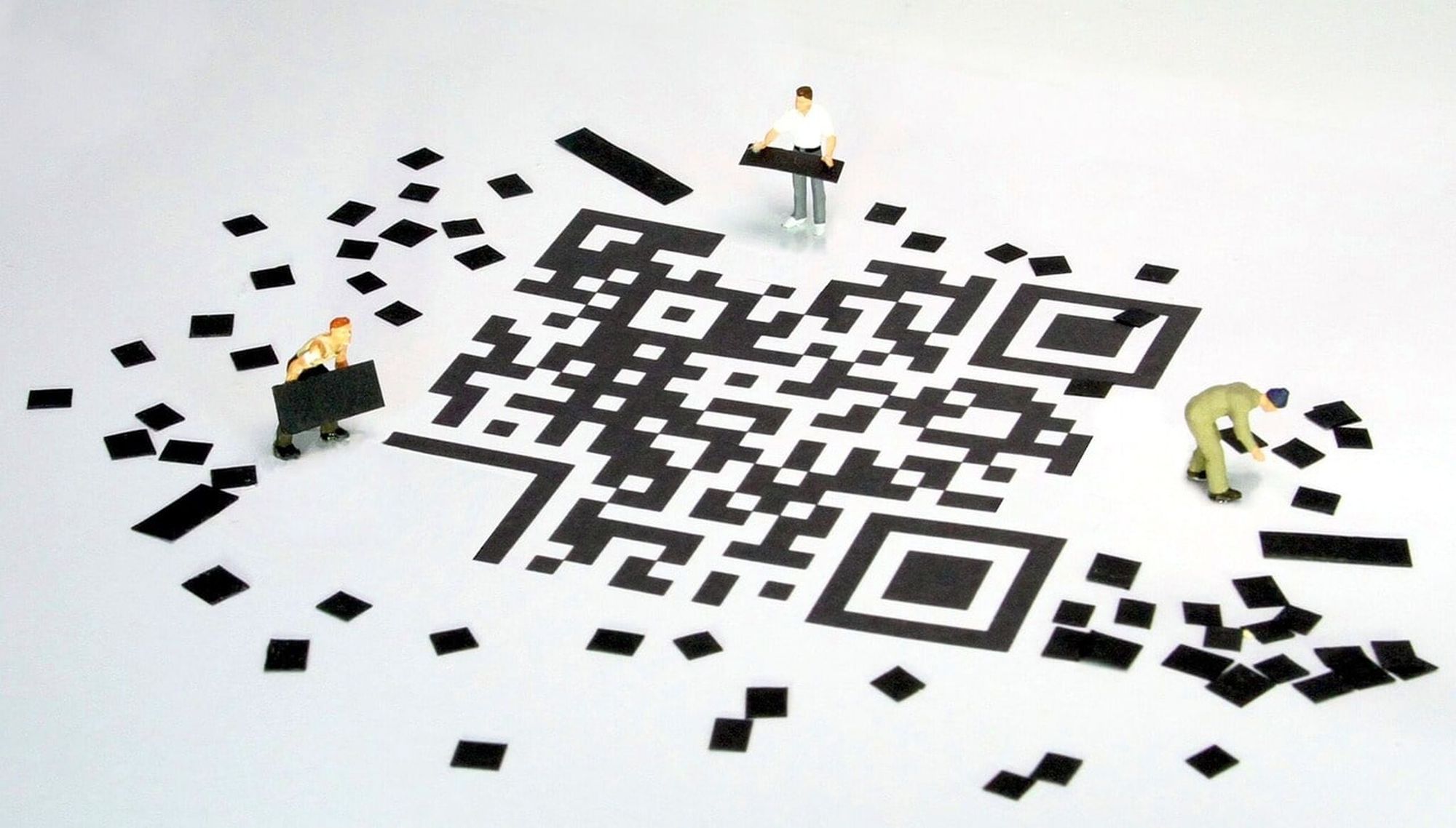
Incorporating QR codes into clothing is a trend that's rapidly gaining momentum in the fashion industry. These little squares of digital magic offer a unique way to engage customers, but their effectiveness depends largely on how well they're implemented.
Let's explore the best practices for using QR codes on clothing to ensure they add value to your brand and resonate with your audience.
Make Urban Experiences Mixed with High Fashion
In the bustling streets of urban landscapes, fashion is not just about style; it's about making a statement. QR codes can bridge the gap between high fashion and everyday urban experiences.
Integrating QR Codes in Urban Fashion:
- Storytelling: Use QR codes to tell the story behind a piece of clothing, whether it's about the design inspiration, the materials used, or the designer's vision.
- Interactive Urban Maps: Link QR codes to interactive maps showcasing fashion hotspots or pop-up events, turning a simple garment into an urban adventure guide.
Product Authentication with QR Codes
In a world where counterfeiting is rampant, QR codes can provide a layer of authenticity to your products.
Using QR Codes for Authenticity:
- Digital Certificate of Authenticity: Link the QR code to a digital certificate or page verifying the authenticity of the product.
- Customer Reassurance: This practice not only combats counterfeiting but also reassures customers of the genuineness of their purchase.
Incorporate Niche Values like Eco-friendliness
Today's consumers are increasingly environmentally conscious, and QR codes can be used to highlight your brand's commitment to eco-friendly practices.
Promoting Sustainability:
- Sustainable Practices: Use QR codes to provide information on how the clothing is made using sustainable methods or eco-friendly materials.
- Transparency: Offer transparency into your supply chain, showcasing your brand's efforts in reducing its environmental footprint.
QR Code Applications in Fashion Marketing
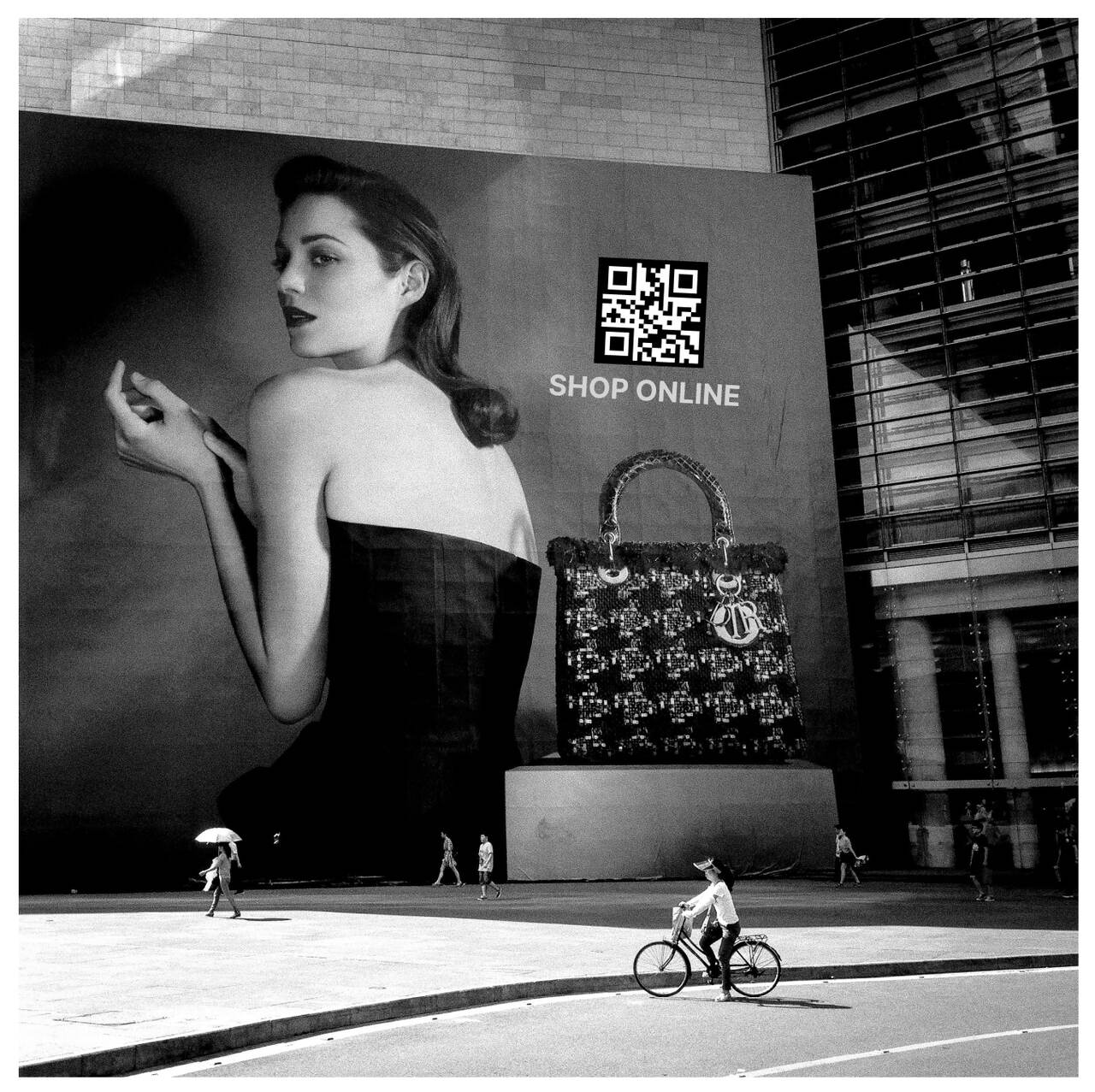
In the dynamic world of fashion marketing, staying ahead of the curve is essential. QR codes, those small, square matrices, are more than just digital fingerprints on clothing; they are powerful tools for revolutionizing how brands interact with their customers.
Let's explore the myriad ways QR codes can enhance fashion marketing strategies.
Promote New Collections and Sales
QR codes are exceptional tools for promoting new collections and sales. They are direct links to new products and exclusive offers, creating an effortless bridge between the customer and your latest offerings.
How QR Codes Can Amplify Promotions:
- Instant Access to New Collections: A QR code on an advertisement or in a store window can immediately take customers to a new collection, making the journey from discovery to purchase seamless.
- Exclusive Deals: QR codes can be used to offer special discounts or access to sales, adding an element of exclusivity and urgency.
Enhance Brand Promotion During Events
Fashion events, whether they are runway shows, pop-up shops, or exhibitions, present an ideal opportunity to engage with an audience in real time. QR codes can be a key player in enhancing this interaction.
Integrating QR Codes in Events:
- Interactive Displays: At events, QR codes can link to detailed information about collections, designers, or the brand's story, enriching the visitor's experience.
- Social Media Engagement: Use QR codes to connect attendees with your brand's social media platforms, encouraging live sharing and interaction.
Link Social Media Accounts via QR Codes
Social media is a cornerstone of modern marketing, and QR codes can be the bridge that connects your physical products with your digital presence.
Benefits of Social Media Integration:
- Ease of Connection: Make it easier for customers to follow your brand on platforms like Instagram, Facebook, or Twitter by scanning a QR code.
- Promote User-Generated Content: Encourage customers to share their purchases on social media by linking QR codes to hashtags or photo-sharing features.
Collect Customer Feedback
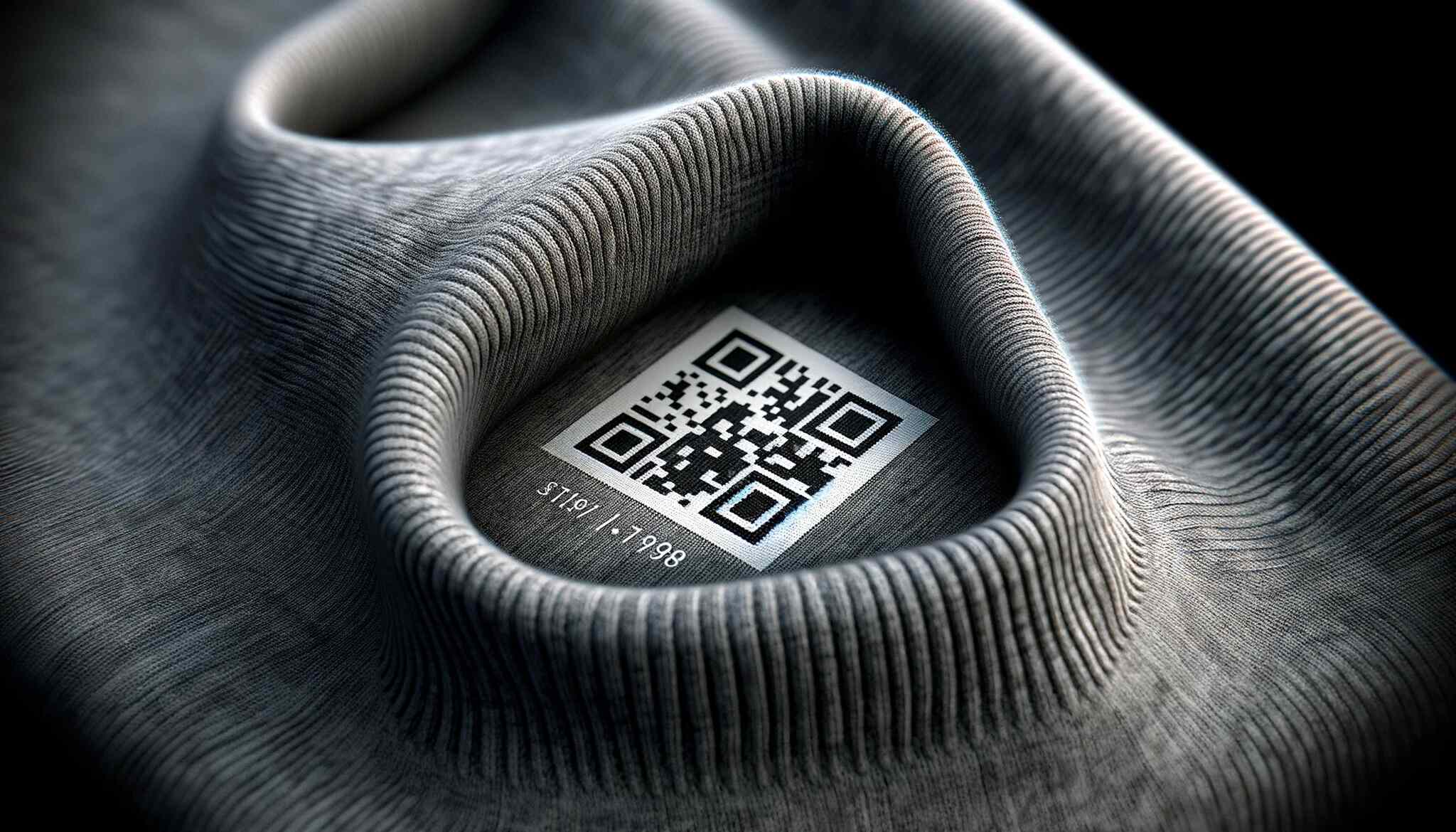
Customer feedback is gold in fashion marketing, and QR codes can be a direct line to gathering this valuable information.
- Instant Reviews: Allow customers to quickly leave reviews or ratings of products by scanning a QR code on the clothing tag.
- Surveys and Polls: Use QR codes to direct customers to surveys or polls, where they can provide insights about their shopping experience or preferences.
Offering Style Advice and Information
In the fashion world, providing customers with styling advice and detailed product information can significantly enhance the shopping experience.
- Styling Tips: Link QR codes to styling guides or videos, showing customers how to wear or pair the items they are interested in.
- Product Insights: Provide in-depth information about the materials, care instructions, or the story behind a product.
Conclusion
As we've explored, QR codes on clothing are more than just a novel idea; they are powerful tools that open up opportunities for interaction, engagement, and storytelling in the fashion industry.
The possibilities are endless, from enhancing the customer experience with styling advice and product authenticity to leveraging QR codes for impactful marketing strategies and sustainable practices.
Let's embrace this digital transformation and weave a new narrative in the tapestry of fashion!
Explore our latest blog posts:


